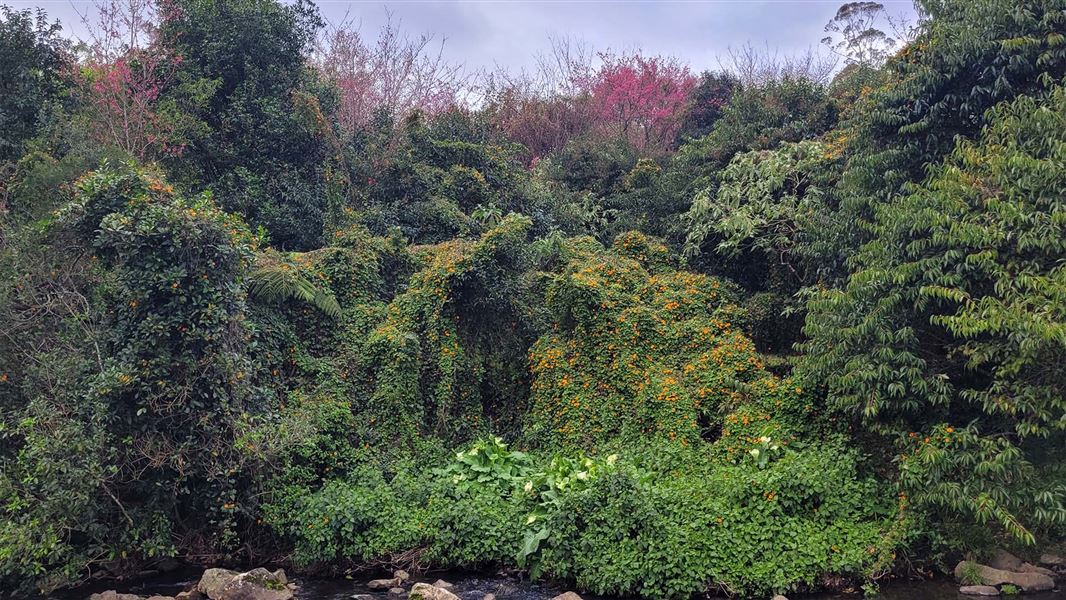Archived content: This media release was accurate on the date of publication.
Date: 21 August 2024
Amongst the new entrants on DOC’s List of Environmental Weeds in New Zealand 2024 are weeds increasing in distribution and invasiveness, such as Chilean myrtle, Bangalow palm, holly fern, purple-flowered iceplant, and the vine bomarea.
Like most environmental weeds in New Zealand, these species all originated as garden plants.
The new list also includes two seaweeds: undaria and caulerpa. Undaria is known as 'the gorse of the sea', while caulerpa was first found in New Zealand in 2021 and has the potential to smother marine ecosystems.
DOC Science Advisor Dr Kate McAlpine says New Zealand has an extraordinary number of exotic plant species – more than 25,000.
“The number of introduced plant species in New Zealand is 10 times greater than the number of native species.”
The new list comprises 386 environmental weeds, an 18% rise from the 328 weeds on the previous (2008) list.
While 112 of these weeds are entirely new additions since 2008, 54 species from the previous list were also omitted in this update.
The previous list only included weed species present on land administered by DOC, whereas the new list includes all environmental weeds irrespective of where they’re found.
Plants are categorised as environmental weeds if they are established in the wild and have significant impacts in natural ecosystems.
“Introduced plants have very few barriers to naturalisation in New Zealand, and many are quick to ‘jump the garden fence’ via bird or wind dispersal, or even people dumping their garden waste at the edge of their local bush reserve,” Kate says.
The report also carries a warning about ‘sleeper’ weeds such as Himalayan wineberry and octopus tree.
“Sleeper weeds aren’t on the list because they’re not established in the wild, or at least not yet. But these are forecast to become fully invasive, with significant impacts on our native species and ecosystems.”
Kate says climate change will only aggravate the weed problem.
“As the climate warms, many environmental weeds will be able to live in parts of New Zealand that were previously too cold. The disturbance created by extreme weather events also tends to favour invasion of environmental weeds.
“The good news is that anyone can help us get a handle of the scale of the weed problem. iNaturalist, the nature recording app, is available for people to post weed observations that can help DOC and other environmental agencies understand weed distribution in New Zealand.”
Kate says all land managers will find the list useful whether they’re iwi, hapū, farmers, councils, community groups or site managers.
“Deciding where to focus weed control efforts can be challenging – we hope this updated list of significant environmental weeds will make it easier.”
List of Environmental Weeds in New Zealand 2024 (PDF, 3,491K)
Contact
For media enquiries contact:
Email: media@doc.govt.nz
